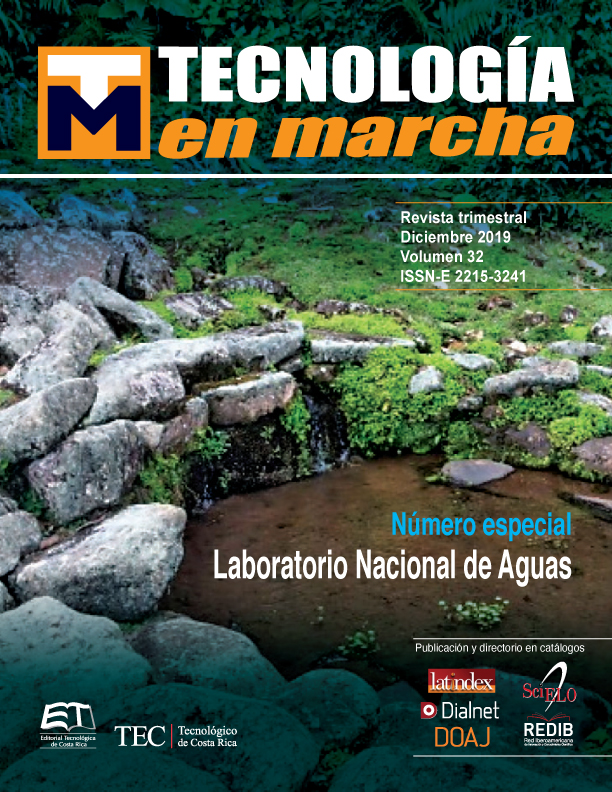Groundwater sources classification in Costa Rica
Main Article Content
Abstract
Groundwater sources require previous treatment. Complexity of water purification depends on microbiological and physical-chemical properties of water. The current groundwater classification guidelines are out-of-date, and they do not respond to the aqueduct operators’ needs to determine whether using new groundwater sources is feasible. This document aims to develop a method for classifying potential groundwater sources in Costa Rica according to their complexity for treating and purifying drinking water. This work stablished four categories (A, B, C and D) for classifying potential groundwater sources, along with the maximum limits allowed for each parameter. The failure to comply with these limits links the source to a specific category that varies depending on the parameter. Comparison was made between the former guidelines and those proposed in this document: former guidelines respond to health assessment and possible water rejection due to its aesthetics features, whereas the guidelines proposed respond to aqueduct operators’ requirements giving them tolls to assess feasibility of potential groundwater sources. Additional information is required to determine the start-up of groundwater sources, i.e., flow rate measurement and vulnerability, water availability, and supply and demand.
Article Details
Los autores conservan los derechos de autor y ceden a la revista el derecho de la primera publicación y pueda editarlo, reproducirlo, distribuirlo, exhibirlo y comunicarlo en el país y en el extranjero mediante medios impresos y electrónicos. Asimismo, asumen el compromiso sobre cualquier litigio o reclamación relacionada con derechos de propiedad intelectual, exonerando de responsabilidad a la Editorial Tecnológica de Costa Rica. Además, se establece que los autores pueden realizar otros acuerdos contractuales independientes y adicionales para la distribución no exclusiva de la versión del artículo publicado en esta revista (p. ej., incluirlo en un repositorio institucional o publicarlo en un libro) siempre que indiquen claramente que el trabajo se publicó por primera vez en esta revista.

